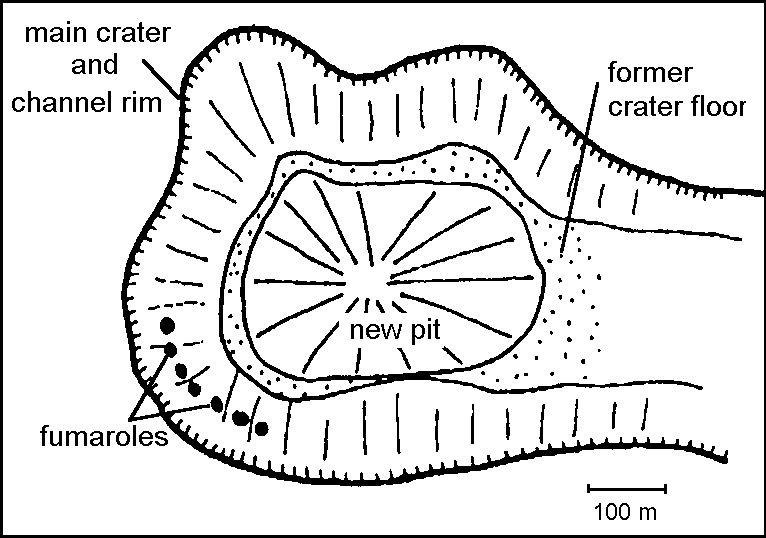Report on Semeru (Indonesia) — July 1990
Bulletin of the Global Volcanism Network, vol. 15, no. 7 (July 1990)
Managing Editor: Lindsay McClelland.
Semeru (Indonesia) End to Vulcanian activity and dome growth; new collapse pit in crater
Please cite this report as:
Global Volcanism Program, 1990. Report on Semeru (Indonesia) (McClelland, L., ed.). Bulletin of the Global Volcanism Network, 15:7. Smithsonian Institution. https://doi.org/10.5479/si.GVP.BGVN199007-263300
Semeru
Indonesia
8.108°S, 112.922°E; summit elev. 3657 m
All times are local (unless otherwise noted)
The press reported that heavy ashfall occurred 21-22 March, with accumulations of up to 5 mm in Malang (20 km NW). VSI noted that the activity was considered "normal" . . . .
By the beginning of July, however, local inhabitants reported that this activity had stopped. A visit to the crater on 28 July revealed a large collapse within the crater formerly occupied by the lava dome (figure 1). The new pit was roughly 200 m deep. Material observed sloughing down the walls caused little dust clouds. No sign of activity was visible within the new pit; one group of fumaroles and light sulfur deposition was found on the SW inner wall of the crater, 30 m below the rim.
Geological Summary. Semeru, the highest volcano on Java, and one of its most active, lies at the southern end of a volcanic massif extending north to the Tengger caldera. The steep-sided volcano, also referred to as Mahameru (Great Mountain), rises above coastal plains to the south. Gunung Semeru was constructed south of the overlapping Ajek-ajek and Jambangan calderas. A line of lake-filled maars was constructed along a N-S trend cutting through the summit, and cinder cones and lava domes occupy the eastern and NE flanks. Summit topography is complicated by the shifting of craters from NW to SE. Frequent 19th and 20th century eruptions were dominated by small-to-moderate explosions from the summit crater, with occasional lava flows and larger explosive eruptions accompanied by pyroclastic flows that have reached the lower flanks of the volcano.
Information Contacts: J. Durieux, GEVA, France; Jakarta Post.


